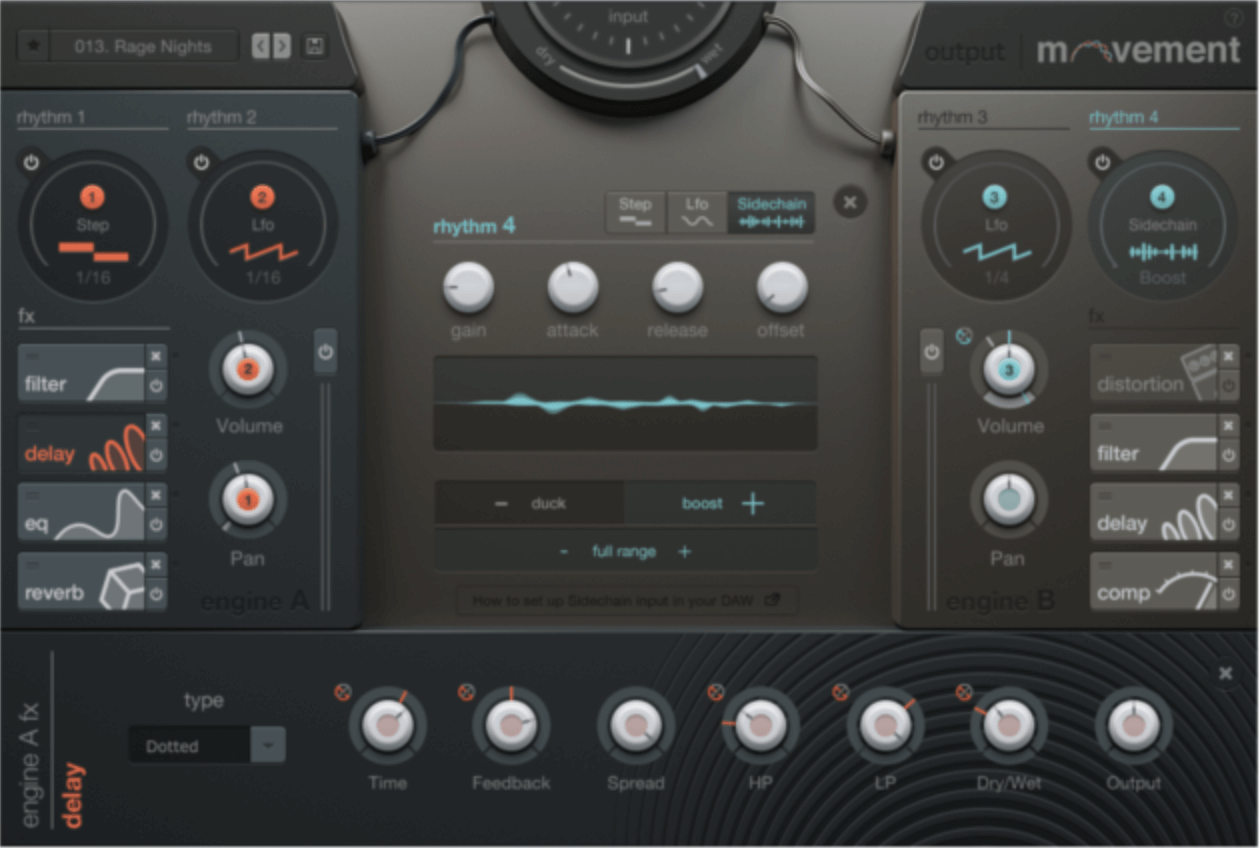10 Ways to Extend Musical Ideas

So, you’ve got a neat idea or loop going , but how do you extend it into a full section without it getting boring?
AudioJungle Author, GeorgioRoss shares his insights on how to extend your musical ideas to keep them fresh, innovative and meaningful.
In music, focusing on one solid idea can often be more effective than writing multiple contrasting sections. Here, are ten tips for making your finest ideas longer and stronger…

Check out GeorgioRoss’s Top 10 Tips and how they have impacted his process and learnings as a successful Author and Music Composer.
1. Development Prep
It might sound obvious, but the most foolproof way to ensure you’ll be able to develop and progress an arrangement is by creating your track elements with this in mind from the start.
For instance, when programming a synth or bass part at the initial loop stage, have a play with various parameters while bearing in mind how these tweaks can be incorporated into an arrangement.
Perhaps dramatically opening the filter cutoff at the end of eight bars will provide much-needed change, or reducing a bass synths filter envelope amount will pull down the part’s ‘twang’ and cool things down mid-track. If you’re using a synth with macros, such as ‘Massive’ or ‘Serum’, then you can go one further and prepare custom knob assignments designed to develop a part throughout the course of a track.

2. Preparing Sufficient Material
Another way to develop the same idea over time is to record and prepare more material than you need, with the foresight that you’ll be able to return to any unused sounds or variations later and use them to develop the track further. This is far easier when your compositional workflow incorporates bouncing or rendering parts to audio.
For example, many composers record synth parts onto an audio track in real time, continuously tweaking knobs in search of a ‘magic moment’ or loop that will form the centerpiece of a track.
Provided you’ve generated enough usable material, this will leave you with a bunch of variations within each audio region that you can extract and incorporate in an arrangement to allow extra movement and change, or the occasional fill.
3. Flip Reverse
A staple of music nowadays—the reverse effect is one of the most basic to execute, yet it can have a massive impact, injecting life into a static track. Take a sound from your arrangement, bounce it to audio, then use your DAW’s audio processing to play this part.
It’s a versatile trick—anything that isn’t a static, sustained sound will likely sound good played backward, whether it lasts for a beat or a couple of bars.
Your core drum groove is an obvious candidate for the reversal, but also try reversing synth stabs, basses or even entire sections of a track to introduce some variation.
4. Rhythmic Variation
An energetic way to switch up an existing section of a track is with rhythmic variation. This can take a near-infinite number of forms.
An example includes the introduction of a new percussion part such as a ride cymbal or bongo, or simple variations in the drum pattern itself, such as staggering the second snare of a bar back by a half-beat or so.
If you’re too lazy to reprogram your parts, then there are a heap of ways to step up the rhythm with a couple of mouse clicks—two of my favorite tricks are mixing in tempo-synced delay on a hi-hat sound to fill in gaps and extra groove, and throwing in a beat repeat/stutter plugin on the whole drum bus to change the entire groove.
5. Freak-Out With Filter
Simply group your core musical elements to a single bus, insert a low-pass filter plugin on this bus, then pull down the cutoff at points when you want to ‘cool down’ the arrangement.
This basic technique can be used in plenty of ways—lowly open the filter to introduce your musical elements as the track develops, sweep the cutoff down later in the arrangement once your ear gets tired of the main hook, or wildly filter parts at unexpected points to keep the listener guessing.
Also, you may want to try a multi-effects plugin like ‘Movement’ or ‘Tornado’—this could help you make anything sound cooler in just a few tweaks.

6. Strip it Down
Old funk and soul records would often strip all the vocal and melodic elements back mid-record, allowing the drummer to let loose in isolation. These funk-fueled ‘breaks’ have long been used as sampling fodder by electronic musicians, but forget shameless sampling.
Instead, take inspiration from the original concept and alleviate aural boredom by giving your listener a well-needed rest mid-track, reducing the current elements down to only drums and bass for a while.
7. Duplicate
Often, you’ll be happy with your current chords and/or riffs, but the actual sounds used might begin to grate on your ears. For a quick and easy variation, simply duplicate a key MIDI region over to another channel and hook up a new synth or instrument.
How you use this new element is up to you—either mute the original part and introduce this new sound as an abrupt tonal switch or keep it subtle and blend the new layer behind the other.
8. Mighty Break
If a track is getting monotonous, it’s tempting to give in and switch to a more exciting, complex musical idea. Don’t do it! Instead, drop out a few parts and transition into a ‘mini breakdown’ designed purely to refresh the ears and break up the flow to enhance the original loop when it returns.
For maximum results, keep this ‘cool-down’ section rolling for 4, 8 or even 16 bars, then build up the tension and drop back into the original idea—perhaps with one or two new changes or sounds thrown in to surprise the listener.
9. Arp – Active!
It may be a cliche heard in a thousand tracks, but give this quick and dirty method a try – once a basic chord sequence has outstayed its welcome within an arrangement, copy the MIDI to another synth instance and arpeggiate these chords to create a synth sequence that supports and rides over the original chords, lifting the interest of the track without having to write a new accompanying part from scratch.
Keep these notes simple and quiet in the mix to provide subtle lift and momentum or go all out and drop in a huge, extravagant synth arpeggio to abruptly ramp up the cheese factor.
10. Roll!
Let’s talk about things like a crash cymbal marking an 8-bar or any n-bar section, fill FX at the end of 8 bars and before another section and chopping out regions to create short gaps in the arrangement. Many of these have become overused throughout mainstream genres, like pop or EDM, but their popularity continues for a simple reason – they allow a steady idea to roll along for much longer, marking out time in an arrangement and adding more thrills without having to introduce new musical elements.
Try to put your own stamp on cliched techniques like these by swapping them out for atypical but functionally similar sounds and try adding them in unexpected (but logical) places, subverting listeners expectations and helping you create a truly unique style. Knowing when to end the idea-sketching and venture into the arrangement process is a skill in itself.
Start laying out a structure without enough elements to carry the arrangement through and you’ll run out of steam. Spend too long piling on the parts and you’ll end up with an aimless mess of ideas that’s too busy to move forward. So the best solution I can give to this issue can be condensed into one word: Practice.

Author Credit: evanat
You can check out Georgio’s AudioJungle Portfolio here. If you have any questions, want to continue the conversation or share your favorite tips, jump over to the forums and connect with your fellow Author community.






